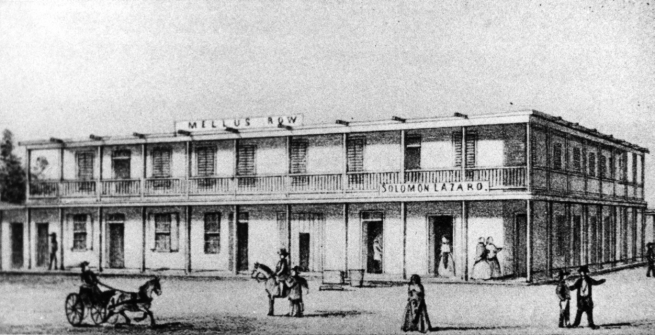President Joseph Biden may have put it best in his 2021 proclamation on Jewish American Heritage Month: “The Jewish American experience is a story of faith, fortitude, and progress. It is a quintessential American experience—one that is connected to key tenets of American identity, including our Nation’s commitment to freedom of religion and conscience.” We celebrate those experiences and achievements this May and have done so since 2006, when George W. Bush first declared the month as one to recognize the generations of Jewish people who have come to America for both better opportunities and to escape the discrimination and injustice which has been woven into the fabric of their history. As the country expanded ever westward, Jewish Americans settled in Los Angeles like so many others, looking for fresh opportunities and to carve out new avenues of enterprise the area offered. Los Angeles is now home to the second-largest Jewish population in America, behind New York, and the fourth largest worldwide.
The story of Jewish history in Los Angeles began in 1841, before California would become a state, with the arrival of the Workman-Rowland wagon train. Among the settlers was a Jewish, German-born tailor, Jacob Frankfort. Little is known about the personal details of Frankfort’s life. We have no journal he may have kept, and while his business dealings, wealth, and civic engagement are well documented, the nearest synagogue was thousands of miles away, and Frankfort, like many who would follow him, was here for business. We know more about his bringing a rifle along with him than we do about whether or not he packed a Kiddush cup and siddur, or lit candles on Shabbat. Frankfort was a skilled tradesman in high demand, and this was the Wild West, after all.
Frankfort wouldn’t be the only Jewish person in Los Angeles for long. Records from the 1850 Census tell us that seven other Jewish pioneers had taken up business in the same two-story adobe building as Frankfort, known as Bell’s Row, on the corner of Aliso and Los Angeles Streets. To get an idea of how well he was doing, the same building was later purchased using money borrowed from Frankfort.
When Rancher Louis Phillips arrived in 1852, he would go on to purchase a 2,400-acre sprawl of land, which would become Huntington Park, Lynwood, Vernon, Maywood, Bell, South Gate, and Montebello. By this time, the Jewish population of Los Angeles was growing rapidly, and people would soon need houses of worship.
Formal religious services wouldn’t begin until 1854 when Joseph Newmark, a wholesale-retail businessman, served as the lay Rabbi of Los Angeles. In 1862, Newmark invited Rabbi Abraham Wolf Edelman to lead the Congregation B’nai B'rith, today known as Wilshire Boulevard Temple.
As Los Angeles was seeing exponential growth and success, so too were the thriving Jewish communities. Boyle Heights was long known as the heart of the Jewish populace. In the mid-1920s, about a third of all of the Jews in Los Angeles lived in Boyle Heights, and by 1930, Boyle Heights would be home to 10,000 Jewish families. Temple Street and the Central Avenue district would also become known as enclaves of Jewish families.
Morris L. Goodman, who sold dry goods in the same Bell’s Row as Frankfort, was elected as one of the first Council members of Los Angeles in 1850 and would be the first of many other Jewish men and women to take up seats in city politics. Harris Newmark, nephew of Joseph Newmark, was encouraged to run for mayor and was on the first board of trustees of the Los Angeles Public Library. However, it wouldn’t be until 2013 when Los Angeles would elect their first Jewish, and current mayor, Eric Garcetti.
Jewish Americans in Los Angeles found places not only in business and politics but in new and emerging fields as well. Los Angeles would soon become known as the movie capital of the world, in no small part due to the contributions of those Jewish persons who found success in showbusiness.
When silent films came onto the scene in the late 1890s, the business was seen as a risky venture by many due to the low cost of tickets and the moral debates around the industry. Regardless, many Jewish vaudeville entertainers and producers migrating from the East saw the opportunity to apply their skills and talents to the silver screen. Los Angeles was soon the premier destination for movie making. In 1915 Carl Laemmle opened the world's largest motion picture production facility, Universal Studios. Adolph Zucker was one of three to found The Paramount Pictures Corporation, which started in the Lasky-DeMille Barn in an orange grove in Hollywood. Theater owner Marcus Loew would go on to purchase Metro Pictures in 1920, soon followed by Goldwyn Pictures and later merged to become Metro-Goldwyn-Mayer Studios in Culver City.
Jewish influence on both Los Angeles and American culture continues to unfold in vibrant and exciting ways. The Los Angeles Public Library is the proud home to a tremendous collection of works both about and influenced by Jewish culture.








